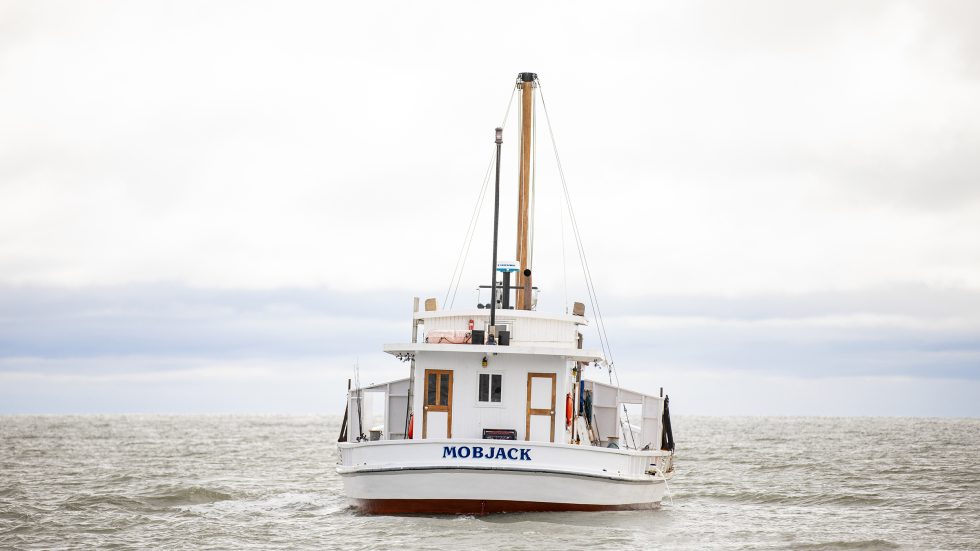The National Marine Manufacturers Association (NMMA) has long been fighting the Environmental Protection Agency (EPA) on its approved partial waivers permitting the use of 15 percent ethanol (E-15). While the EPA has not approved E-15 for marine engines with its waiver, much of the marine industry does not think increased ethanol is good for anyone, and NMMA is certainly not alone in its fight.
Two bills before the current legislative congress might put at a halt, if not a cap, on fuel with increased ethanol. Sen. Roger Wicker, R–Miss., and four other senators have sponsored bill S. 344, which would prohibit EPA from approving fuel with more than E-10. In the House, Rep. Jim Sensenbrenner, R-Wis., introduced H.R. 875, which would require EPA to stop the use of gasoline containing 15 percent ethanol (E-15) until its harmful effects are investigated further. This would essentially repeal the current waiver in order for EPA to seek an independent scientific analysis of the effects of the E-15 blend.
Rep. Sensenbrenner said, in his press release announcing the introduction, “There have been several tests and warnings highlighting E-15’s harmful effects on engines and their components, but they have all been dismissed by the EPA.” Rep. Sensenbrenner said during the 112th Congress that he introduced several bills to address the risks associated with E-15.
NMMA works hard to lobby on Capitol Hill about the ethanol issue. Jim Currie, NMMA legislative director, said he likes the two bills before Congress, but he also thinks they can do better. “We are hoping there will be a more comprehensive bill in this Congress,” he said. That bill, the NMMA hopes, will look like the one it has drafted and is actively promoting to legislators.
RFS
Currie said the heart of the problem is not ethanol blended fuels but rather the Renewable Fuel Standard (RFS), set forth in the Energy Independence and Security Act of 2007. The law increases the amount of ethanol to be blended into fuel in incremental amounts. By 2022, it requires 36 billion gallons of biofuels (not just ethanol) to be added, increased from 4.7 billion gallons in 2007.
Other biofuels are in this market: The NMMA, for instance, has also studied the use of isobutanol as an alternative to or as a blend with ethanol. Isobutanol is out there but not yet in large enough quantities to be distributed widely.
Currie said there are limits on the amounts of ethanol production, too. The other problem with RFS is Congress didn’t set a percentage of fuel that needed to be a biofuel blend, it set a specific amount – one Currie isn’t sure ethanol production can even meet.
“In 2007, Congress made the assumption that gasoline consumption would go up, and it hasn’t,” Currie said. “With more efficient vehicles and the recession, it’s gone down, but by law ethanol has to go up.”
He said production levels are about to hit the “Blend Wall.” The fuel being produced now is using all the ethanol in production at E-10, and the only way to then increase ethanol amounts is to increase the overall percentage. Currie said the past year ethanol production was at about 13.8 billion and the law requires more than 15 billion for 2012.
“Unless retailers sell gasoline with more than 10 percent, they don’t have anywhere to put this stuff,” Currie said. They, the ethanol producers, also have a big and powerful play in this issue.
Behind the production of ethanol is an elaborate infrastructure – and a very profitable one, Currie said, where multibillion-dollar conglomerates make huge profits from growing corn. Currie said the price of corn is so high, some farmers are pulling land put aside for conservation purposes to grow corn. Crop rotation can naturally rebuild the earth, or farmers can use more fertilizer. Currie said this upsets conservation groups, and the marine industry is far from the only industry fighting against ethanol increases.
Hill Briefings
Currie represents the NMMA on Capitol Hill, trying to educate and influence legislators. Many other industries are also there to speak out against ethanol. “We are continually trying to educate the members of Congress. In this office, we do lots of meetings,” Currie said.
On February 5, a large group from many industries held a briefing for legislators. The group included petroleum refiners, poultry and dairy producers, the motorcycle, RV and snowmobile industries, and some environmental groups. Currie said some groups are concerned with the effects of diverting corn to ethanol production on rising food prices. “We were the only ones talking about marine engines,” Currie said, but all together some have heard the chant.
Currie said in talking with legislators, some are better informed than others. For the most part, Currie said it is not a partisan issue; it is a regional one. States with big boating populations generally understand the issue, and farming states are a tougher sell.
Currie spoke at the briefing about many of the tests done on marine engines run with E-15, specifically some done by Mercury Marine in 2010 and 2011. It did the study under contract with the Department of Energy and coordinated by the National Renewable Energy Lab (NREL). The final report, released in October 2011, can be found on the NREL website (www.nrel.gov).
Where To?
Retailers are still not widely distributing fuel with 15 percent ethanol. Currie said many are reluctant to open up to the fuel, in fear of what else it might open them up to – like complaints or worse, lawsuits from dissatisfied customers.
Although the E-15 waiver has never included marine engines, from the beginning, the NMMA has sounded its disapproval for the programs labeling measures in order to prevent misfueling (a 3-inch by 5-inch sticker on gasoline pumps).
NMMA still fights mainly to overturn the waiver, with Currie pushing its more comprehensive bill, in search of a legislator to sponsor it.
Currie said under current Renewable Fuel Standards, the 2022 mandate could put ethanol percentages at 25 to 45 percent. “That’s totally unreasonable,” he said. “We’re looking for a hero, somebody who will really take this on and go at the renewable fuel standard, and let’s correct this mistake.”
Eds. Note: This article is from HeartLand Boating’s sister publication, Marina Dock Age. Find out more about the magazine at www.marinadockage.com.



